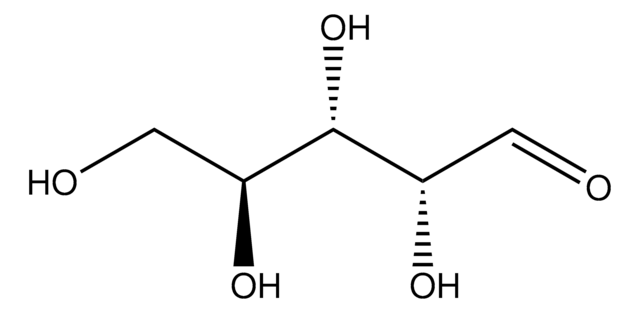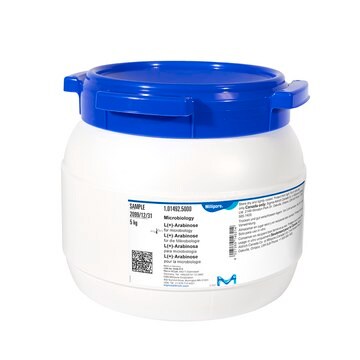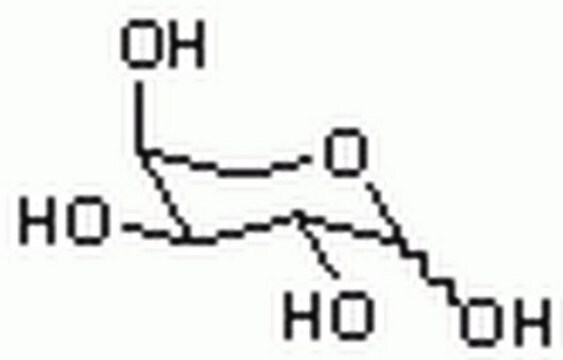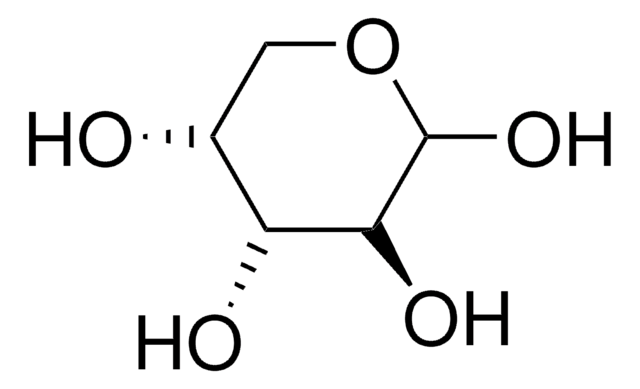A3256
L-(+)-Arabinose
≥99% (GC)
Sinónimos:
(+)-Arabinose
About This Item
Productos recomendados
Análisis
≥99% (GC)
formulario
powder
actividad óptica
[α]/D +103 to +105°°(lit.)
técnicas
flow cytometry: suitable
gas chromatography (GC): suitable
ion chromatography: suitable
microbiological culture: suitable
color
white to off-white
mp
160-163 °C (lit.)
solubilidad
water: 100 mg/mL, clear, colorless
idoneidad
suitable for determination of protein concentration
suitable for microtiter plates
aplicaciones
genomic analysis
life science and biopharma
microbiology
cadena SMILES
OC[C@H](O)[C@H](O)[C@@H](O)C=O
InChI
1S/C5H10O5/c6-1-3(8)5(10)4(9)2-7/h1,3-5,7-10H,2H2/t3-,4-,5+/m0/s1
Clave InChI
PYMYPHUHKUWMLA-VAYJURFESA-N
¿Está buscando productos similares? Visita Guía de comparación de productos
Descripción general
Aplicación
- to induce and regulate the expression of specific genes or proteins in bacterial strains
Acciones bioquímicas o fisiológicas
Características y beneficios
- Suitable for biochemical and cell culture research
- Versatile and adaptable for wide variety of laboratory and research applications
Otras notas
producto comparable
Código de clase de almacenamiento
11 - Combustible Solids
Clase de riesgo para el agua (WGK)
WGK 3
Punto de inflamabilidad (°F)
Not applicable
Punto de inflamabilidad (°C)
Not applicable
Equipo de protección personal
Eyeshields, Gloves, type N95 (US)
Certificados de análisis (COA)
Busque Certificados de análisis (COA) introduciendo el número de lote del producto. Los números de lote se encuentran en la etiqueta del producto después de las palabras «Lot» o «Batch»
¿Ya tiene este producto?
Encuentre la documentación para los productos que ha comprado recientemente en la Biblioteca de documentos.
Los clientes también vieron
Nuestro equipo de científicos tiene experiencia en todas las áreas de investigación: Ciencias de la vida, Ciencia de los materiales, Síntesis química, Cromatografía, Analítica y muchas otras.
Póngase en contacto con el Servicio técnico







